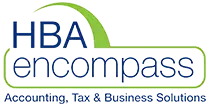If you’re operating a business within a trust, there’s an exciting tax strategy you should be aware of. Under recent ATO Capital Gains Tax (CGT) rules, it’s possible to move your business from a trust to a company without triggering CGT liabilities. For businesses with minimal physical assets and significant profits, this move could present major tax advantages.
Why Consider Moving from a Trust to a Company?
- CGT Relief: Normally, selling or transferring a business would trigger Capital Gains Tax on any increase in the value of the business. However, if you’re operating through a trust, the ATO allows for a CGT-free transition when moving to a company structure.
- Lower Corporate Tax Rate: For businesses generating significant income, switching to a company structure could mean paying tax at the lower corporate rate of 25% rather than the higher personal or trust tax rates. This is particularly valuable if you’re running into issues with Division 7A loans, which often complicate tax planning within trusts.
- Simplifying Your Tax Structure: In addition to potential tax savings, a company structure can simplify your tax obligations. Division 7A loans, a common tax deferral strategy used in trusts, can become problematic over time, especially with large repayments looming. By moving your business to a company, you eliminate the need to manage Div 7A loan repayments, saving you time and stress.
Industries That Should Take Notice
One industry where this is particularly relevant is building and construction. Regulatory bodies like the Queensland Building and Construction Commission (QBCC) are known to disapprove of businesses operating through trusts. Moving to a company structure could not only streamline your tax planning but also help align your business with QBCC requirements, making it easier to maintain your license.
How to Make the Move
If you’re considering moving your business from a trust to a company, it’s important to get the timing and process right. This transition can bring substantial tax savings and simplify compliance, but it requires careful planning. Every business is unique, so if this scenario applies to you—especially if you’re in the building industry—it’s worth having a chat with us to explore whether it’s the right move.


